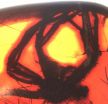(Press-News.org) Greater awareness of 'specific language impairment' (SLI), a language disorder, is needed to ensure better outcomes for the 3-6 per cent of UK school children affected by this disability. Children with SLI have difficulties with most or all aspects of language including grammar, vocabulary and literacy as well as with short term memory. According to new research funded by the Economic and Social Research Council (ESRC), they also have problems with higher order thinking skills. SLI may have a greater impact on these children than the better know disorder, dyslexia.
"The lack of understanding of specific language impairment contrasts markedly with the broader understanding and acceptance of similar disabilities such as dyslexia," says researcher Professor Lucy Henry of London South Bank University.
SLI and dyslexia are similar in that both involve a 'specific' disability, which is generally believed to affect one particular aspect of a child's thinking and ability to deal with information. In the case of dyslexia, the dimension that is affected concerns reading. In the case of SLI, the dimension affected is language with grammar, vocabulary, the understanding of meaning, and the ability to use sounds appropriately all potentially being affected.
"SLI is often diagnosed when it is noticed that a child's speech is poorer than his or her other abilities. The speech difficulties can involve grammar, a small vocabulary or other aspects of language. In addition, because language is important for reading, around half of children identified with SLI also have difficulties with reading. These problems are not due to them having a general learning disability, autism, hearing impairments or brain injury, " Professor Henry explains.
This new research also found significant weaknesses with higher order thinking skills – including multi-tasking while trying to remember something, generating ideas, finding solutions to new or demanding tasks, and ignoring irrelevant information where necessary.
With these added difficulties children with SLI may struggle to cope with many classroom learning activities. As Professor Henry highlights: "The key aspect for children in the classroom is learning new skills and dealing with novelty – and as higher order thinking skills are exactly the tools required to do this successfully, children with SLI often fall behind their peers".
SLI can, without intervention, continue into adulthood and have very marked, negative consequences for both academic achievement and mental health. "The outcomes in later life for many children with SLI are not particularly rosy," Professor Henry points out. "Between 50 and 90 per cent of those affected by SLI never reach typical levels of language use".
Indeed, existing studies of young adults with SLI in their 30s show that on the whole they have very few educational qualifications, often have difficulty finding stable employment and, lacking the language skills to make good friendships, can become quite isolated. Hence, it is vital that we spread awareness of this disorder, particularly among school teachers, so that we can improve outcomes for the significant numbers of children affected.
Findings indicate that considerable levels of support will be required for children and young people with SLI when they are embarking on any type of learning task. The key issue for teachers is that children with SLI have not only language problems but difficulties in terms of thinking, remembering and planning which touch on a whole range of classroom activities. Importantly, SLI may not be quite as specific to language only as previously thought.
"We hope that this research will raise awareness among all teachers, not just speech and language specialists, of the complex difficulties that children with SLI face in the classroom," Professor Henry states. "We also hope to raise awareness of the many techniques class teachers can employ which will help children with SLI learn more effectively."
INFORMATION:
FOR FURTHER INFORMATION, CONTACT
Professor Lucy Henry (Tel: 07771 626936, email: henrylc@lsbu.ac.uk)
ESRC Press Office:
Danielle Moore (Tel: 01793 413122, email: danielle.moore@esrc.ac.uk )
Jeanine Woolley (Tel: 01793 413119, email: jeanine.woolley@esrc.ac.uk )
NOTES FOR EDITORS:
1. This release is based on findings from a project Executive functioning in children with specific language impairment, carried out by Professor Lucy Henry, Director, Centre for Research in Psychology, London South Bank University and Professor David Messer, Open University. Dr Gilly Nash was employed as the Research Fellow on the project. See further details on children with specific language impairment, at: creet.open.ac.uk/projects/efesrc/index.cfm
2. Methodology: Researchers assessed 40 young people with specific language impairment, who were between 10 and 14 years old. All were referred by Speech and Language Therapists or Headteachers as having marked difficulties with language. Researchers only included children and young people who had non-verbal abilities within the average range. The young people with SLI were assessed with the same comprehensive language test battery typically used by speech-language therapists. Following this, they were administered a range of measures designed to assess their executive thinking and reasoning skills.
3. The ESRC is the UK's largest organisation for funding research on economic and social issues. It supports independent, high quality research which has an impact on business, the public sector and the third sector. The ESRC's total budget for 2010/11 is £218 million. At any one time the ESRC supports over 4,000 researchers and postgraduate students in academic institutions and independent research institutes. More at: www.esrc.ac.uk
END
Irony has hit the health care system. While its goal is to safely heal injuries and diseases, the U.S. healthcare system has created an epidemic of medical errors. Recent studies reveal the physical and financial toll these medical mistakes continue to take on the quality of patient care. While medical malpractice reforms have attempted to curb the damages patients may recover after an injury caused by medical negligence, the health care system still suffers from a lack of incentive for doctors and hospitals to impose and adhere to stricter safety measures. In the meantime, ...
Scientists have used the latest computer-imaging technology to produce stunning three-dimensional pictures of a 49 million-year-old spider trapped inside an opaque piece of fossilized amber resin.
University of Manchester researchers, working with colleagues in Germany, created the intricate images using X-ray computed tomography to study the remarkable spider, which can barely be seen under the microscope in the old and darkened amber.
Writing in the international journal Naturwissenscaften, the scientists showed that the amber fossil – housed in the Berlin Natural ...
The U.S. Supreme Court recently heard oral arguments in a case that has the potential to make it easier for accident victims and their families to bring products liability claims against automobile manufacturers. In Williamson v. Mazda Motor Corp. of America (No. 08-1314), the Court has been asked to decide whether federal safety regulations preempt state-based products liability claims against car manufacturers.
In Williamson, 32-year-old Thanh Williamson died as a result of injuries sustained in a 2002 car crash. Williamson was sitting in the second row seat of a 1993 ...
ATS 2011, DENVER – A Wednesday morning session will explore the inhalational exposures and respiratory outcomes of military deployment to Iraq and Afghanistan. Presenters will review current knowledge on complex inhalational exposures, epidemiologic studies, animal toxicology studies, and clinical lung findings in U.S. military men and women who are returning from Southwest Asia.
D6 "Occupational Lung Diseases in U.S. Military Personnel Deployed to Iraq and Afghanistan" will take place from 8:15 to 10:45 a.m. in the Wells Fargo Theatre Section 1 on the street level of ...
ANN ARBOR, Mich. — About half of prostate cancers have a genetic anomaly that appears to make tumor cells responsive to a new class of cancer-fighting drugs, a new study from the University of Michigan Comprehensive Cancer Center finds.
The drugs, called PARP inhibitors, are currently being tested in breast cancer patients with mutations in the BRCA1 and BRCA2 genes, which are found in up to 10 percent of all breast cancers.
Half of prostate cancers have a genomic rearrangement that causes the fusion of two genes called TMPRSS2 and ERG. This gene fusion, believed to ...
Head injuries can be classified in one of two ways, open and closed.
Open, or penetrating, head wounds are what most of us think of when picturing common brain injuries. They occur when an object pierces the skull, and are usually easy to observe and detect.
Closed head injuries, on the other hand, typically involve a blow from an object that does not break the skull. Closed head injuries are often difficult to diagnose, since they often evince no external signs. Yet, they can be just as damaging as their open counterparts.
An article by Leonardo Rangel-Castilla, ...
The results from a very well-done meta-analysis support other data generated on the risk of alcohol consumption and gastric cancer – that is – that the risk may be real for heavy alcohol consumption but not for moderate intake. The type of gastric cancer relating to heavier alcohol intake in this study tended to be tumors involving the noncardia, but differences between the association with tumors of the gastric cardia were not significant.
There was no increased risk of gastric cancer from alcohol intake among Asians; this may be due to their lower alcohol intake; ...
PHILADELPHIA—Cancer researchers at the Kimmel Cancer Center at Jefferson and an international team of collaborators have discovered a biomarker in breast cancer that may help identify which women will respond to anti-estrogen therapy.
The research appears in the May 16 online issue of the Journal of Clinical Oncology.
Anti-estrogen drugs, most notably tamoxifen, are widely used in patients diagnosed with estrogen receptor-positive breast cancer. However, as many as a third of the women given tamoxifen fail to respond.
In this new study, the investigators found ...
Baylor University, in collaboration with the U.S Forest Service (USFS) Rocky Mountain Research Station, has developed a model that predicts the risk of wetland habitat loss based on local wetland features and characteristics of the landscape surrounding the wetland. The new model was used to predict the fate of wetland habitats over a 13-state area in the southern United States and was published in the journal Ecological Applications.
"Because conservation resources are scarce, it is essential to focus conservation efforts on those geographic areas where the risks for ...
"Seeing something invisible with your own eyes is an exciting experience," say Joachim Fischer and Tolga Ergin. For about one year, both physicists and members of the team of Professor Martin Wegener at KIT's Center for Functional Nanostructures (CFN) have worked on refining the structure of the Karlsruhe invisibility cloak to such an extent that it is also effective in the visible spectral range.
In invisibility cloaks, light waves are guided by the material such that they leave the invisibility cloak again as if they had never been in contact with the object to be ...

